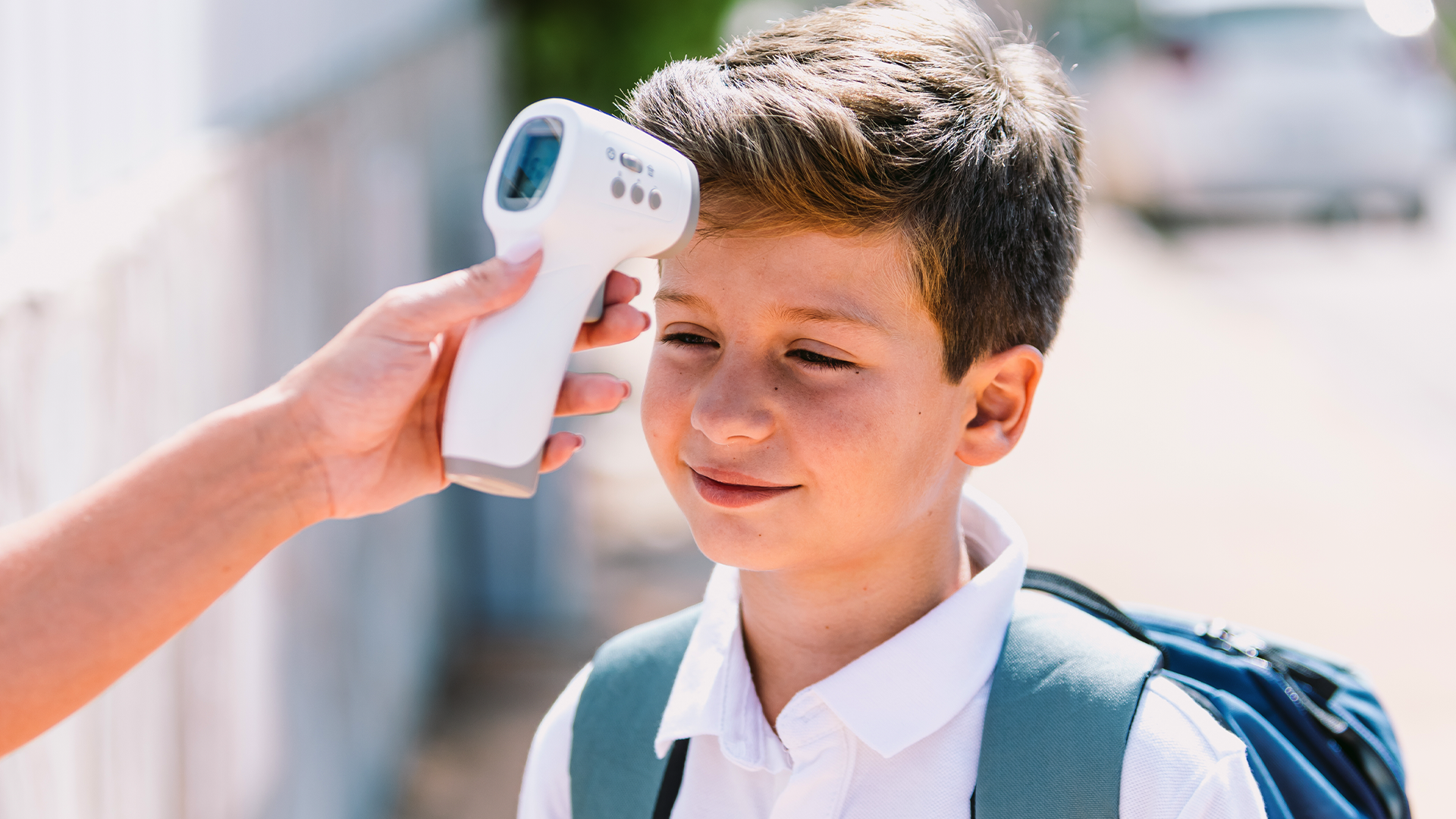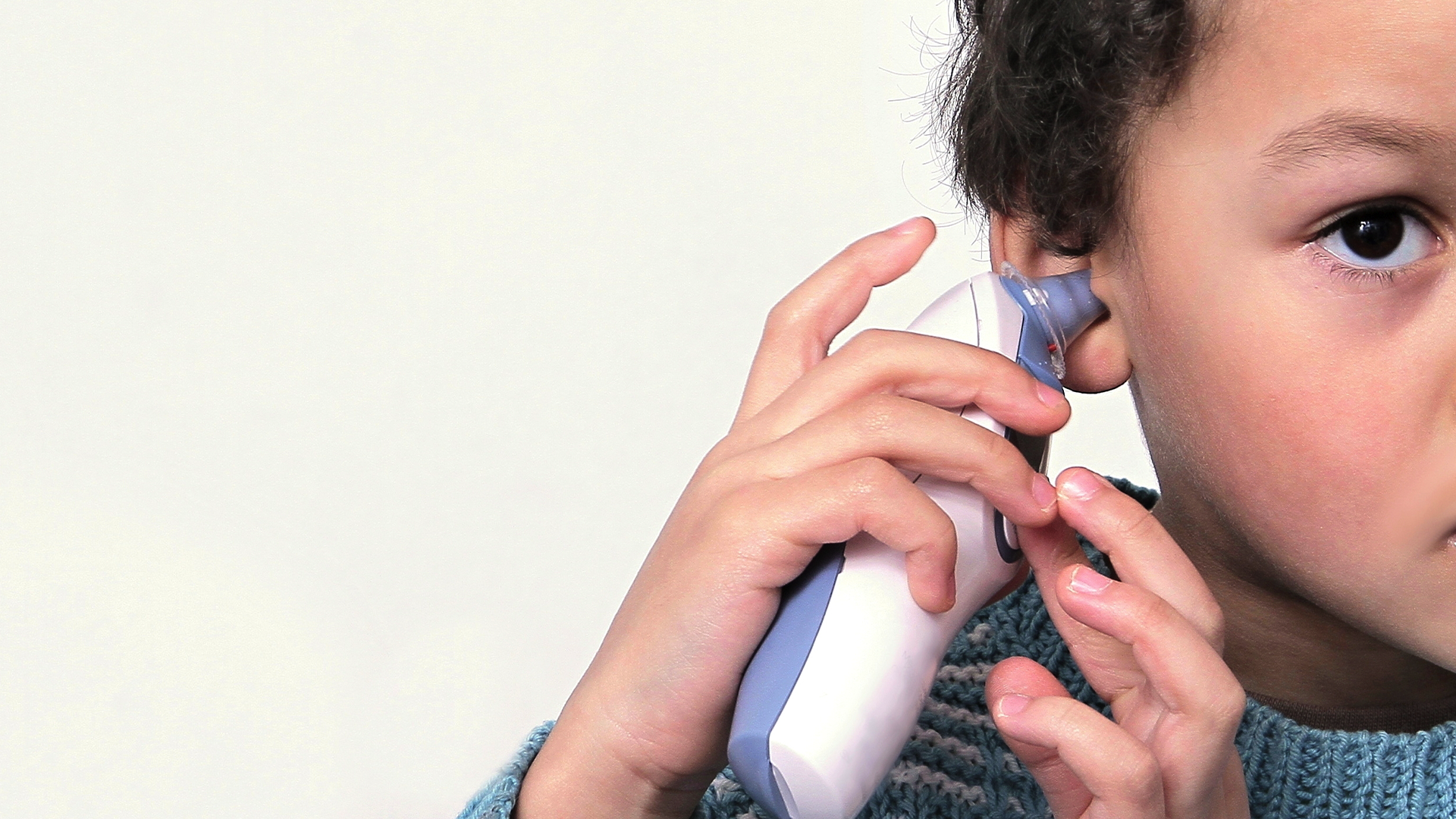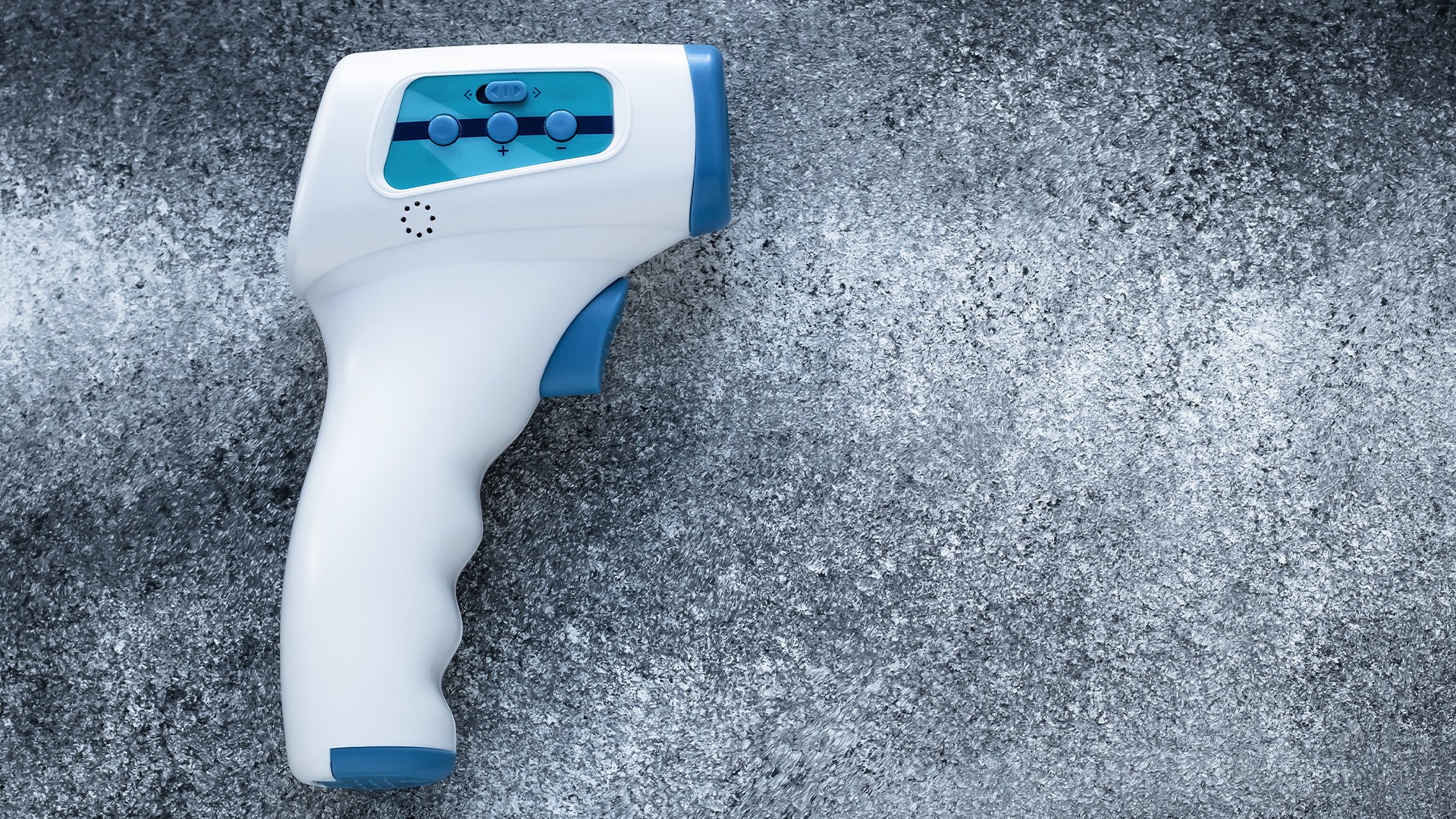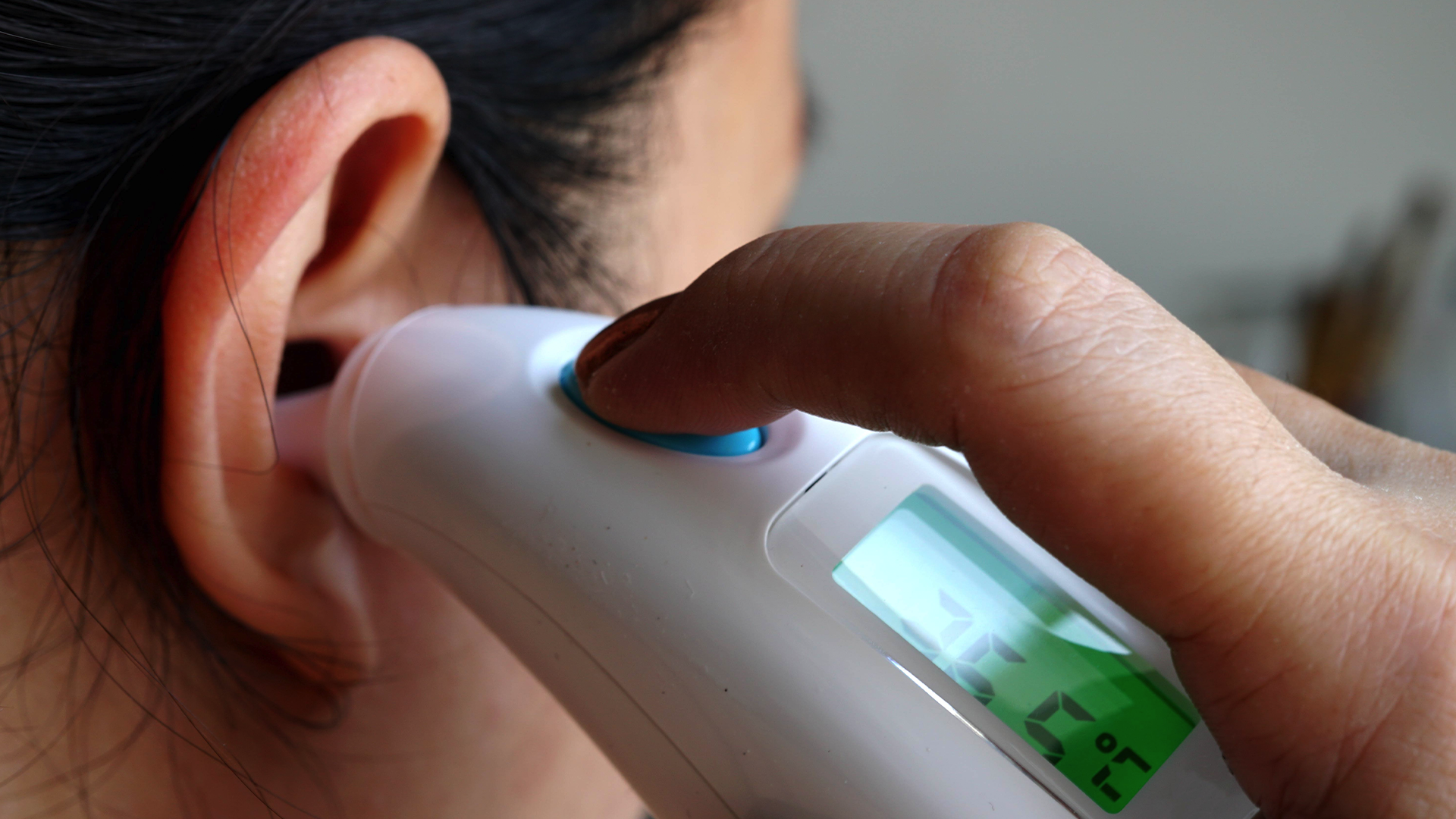Quick Links
Key Takeaways
Infrared thermometers are quick and convenient. They're also reasonably accurate, but only when used properly. Keep an oral or rectal thermometer on hand to verify any alarming readings from an IR thermometer.
No-contact infrared thermometers are more common than ever before, largely thanks to reduced prices and increased visibility in popular culture. But can infrared thermometers match the accuracy of oral or rectal alternatives?
To be clear, we're only talking about clinical no-contact thermometers. General-purpose IR thermometers, which you might use in a kitchen or industrial setting, cannot measure body temperature with any kind of accuracy.
We aren't doctors, and we aren't offering medical advice. Contact a doctor if you or a family member is feeling ill.
How Do Infrared Thermometers Work?
All humans emit IR radiation, and the amount of infrared emitted from your body increases with your temperature. So, forehead and ear thermometers have a pretty easy job. They use a lens to direct your IR radiation toward a thermopile---a thing that converts thermal energy into an electrical signal.
This electrical signal is measured to determine your body temperature. An IR thermometer, whether it's made for your forehead or ear, will show this temperature on a small digital display.
Now, as you may know, the inside of your body is a bit warmer than your skin. To make up for this fact, forehead thermometers do a bit of number magic. This "magic" may differ from brand to brand, but the end result is a reading that's comparable to your oral temperature.
Note that all digital thermometers suffer from "drift," which is a decrease in accuracy due to age. You may need to recalibrate an infrared thermometer every now and then, especially if it's exposed to extreme temperatures. I suggest reading the manual for calibration instructions.
IR Thermometers Are Reasonably Accurate
According to FDA guidelines, clinical non-contact infrared thermometers must be tested and labeled to meet the IEC 80601-2-59:2017 standard (or a similar performance standard). That said, every clinical thermometer (whether it's oral, rectal, or IR) has some degree of "measurement uncertainty," which must be listed on product packaging or user instructions.
From our research, we've concluded that most forehead thermometers are accurate within a range of three degrees Fahrenheit. Ear thermometers, which also use infrared light, are shown to be more accurate than forehead thermometers in clinical studies. (Oral and rectal thermometers usually have a "measurement uncertainty" of one degree or less, meaning that they are more accurate and reliable than no-contact alternatives.)
So, even if you do everything right, a forehead thermometer may overshoot or undershoot your temperature by about three degrees. That's pretty bad---if you're at a normal body temperature (between 97 and 99 degrees), a difference of three degrees could indicate fever or hypothermia. But this a
But this is a "worst-case scenario" kinda thing. If you follow the manufacturer instructions, an infrared thermometer should provide fairly accurate readings. But that brings us to another problem; forehead thermometers are vulnerable to user error and environmental variables.
Forehead thermometers may give you an inaccurate reading when used at the wrong angle or distance. Sunlight can also impact a forehead thermometer's performance, as can any obstructions on a patient's forehead (such as hair, grease, or sweat). The FDA recommends that you closely follow manufacturer instructions to get a good reading from an IR thermometer.
Ear thermometers don't match the convenience of forehead guns, but they offer more accuracy and ease of use. If you want a no-contact thermometer for home use, an ear thermometer may be a better choice than a forehead gun.
One last note---smugglers sold a lot of unregulated IR thermometers on Amazon and eBay during the early years of the pandemic. The sale of unregulated clinical thermometers is illegal in the United States, and predictably, such thermometers are garbage.
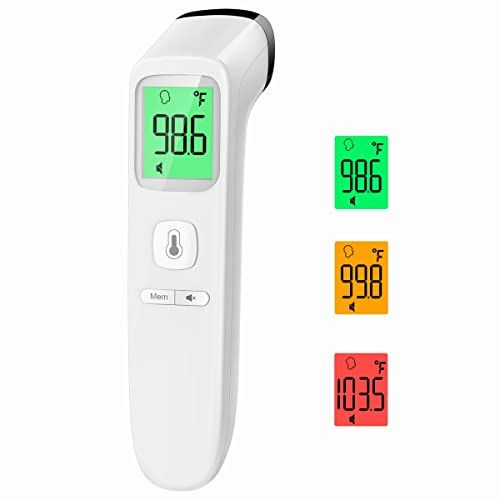
Forehead Thermometer, Baby and Adults Thermometer with Fever Alarm, LCD Display and Memory Function, Ideal for Whole Family
This affordable and compact forehead thermometer features settings for both babies and adults. It plays a tone when it detects a fever, though you can mute this tone when scanning someone who's asleep.
How Do You Use an IR Thermometer Correctly?
According to the FDA, you must strictly follow the manufacturer's instructions when using a forehead or ear thermometer. These instructions may differ between two thermometers, even if they come from the same company.
But the FDA also offers some general advice for infrared thermometer usage. First, you need to be indoors and away from sunlight or drafts, which may impact readings. You should also leave an IR thermometer in a room for about 30 minutes before using it---if the thermometer itself is too warm or cold, it won't work correctly.
If you're using a forehead thermometer, make sure that you're scanning a clean forehead. Grease, sweat, and hair can affect readings. Hats and scarves can increase forehead temperature, so they must be removed for a short period before scanning. And any friction applied to the forehead (from cleaning your face or wiping off makeup) can temporarily increase forehead temperature.
The FDA states that forehead thermometers must be perpendicular to your forehead. You cannot use a forehead gun at an angle. As for the distance between your thermometer and your forehead---check the manufacturer's instructions.
Ear thermometers are a bit less temperamental than forehead guns. That said, you should still read manufacturer instructions when using an ear thermometer.
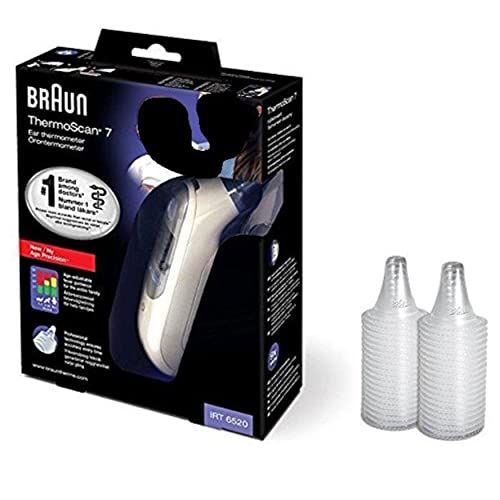
Braun Thermoscan 7 IRT6520 Thermometer + Bonus 40 ThermoScan Lens Filters
This Braun ear thermometer features settings for toddlers, children, and adults. It comes with 40 hygienic lens filters and includes batteries.
Should You Use a No-Contact IR Thermometer?
If you only care about accurate temperature readings, oral or rectal thermometers are a better choice than no-contact IR thermometers. They offer a smaller margin for error, and they aren't as vulnerable to user error or external variables.
Still, no-contact infrared thermometers are fairly accurate when used correctly. And you can't beat the speed or convenience of infrared. So, despite their reduced accuracy, IR thermometers are an invaluable medical tool, especially when screening large groups of people, tracking the temperature of someone who is ill, or getting the temperature of a fidgety child.
But if you're shopping for an IR thermometer, you should probably buy one that scans your ear canal. Studies indicate that ear thermometers are more accurate than forehead guns. (It's also a lot harder to screw up when using an ear thermometer.)
Ideally, you should verify any alarming (or suspicious) temperature readings using an oral or rectal thermometer. If you or a family member is experiencing fever or hypothermia, contact a doctor.
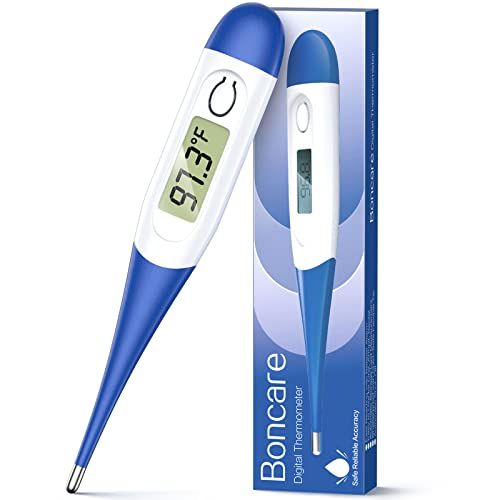
Thermometer for Adults, Digital Oral Thermometer for Fever, Basal Thermometer with 10 Seconds Fast Reading
This thermometer can be used for oral, rectal, or underarm temperature readings and features a soft silicone tip with a stainless steel probe.

